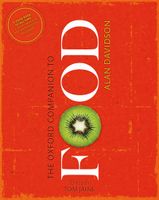Advertisement
Colour and Cooking
Appears in
Published 2014
See also the following entry, on colouring of food.
The particular substances in foodstuffs which are responsible for their colour are known as pigments. Most of them belong to closely related groups of chemicals, the special spacing of whose atoms brings about different light-trapping effects. Minor chemical differences between the members of the group give different colours. All this applies to natural and artificial colours alike. Examples of the former are the green chlorophyll pigment in plant leaves and the orange pigment present in carrots, carotene. The latter include many pigments derived from coal tar (all 12 of the artificial colours permitted by EEC regulations are coal tar derivatives).


